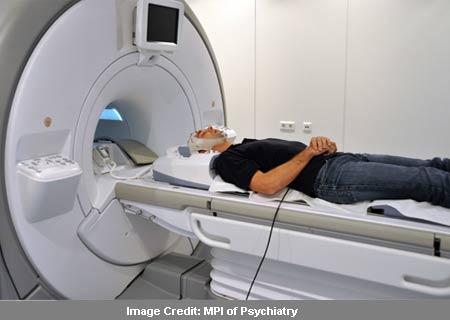Hyderabad, Oct 29 (PTI) One of Asia's premier
healthcare groups, Apollo Hospitals, today launched a 'stroke
robot' which will assist experts to diagnose and advise
treatment for brain stroke patients within the country and
outside, its chairman said.
"RP-7, a state-of-the-art, wireless and internet-based
robot allows neuro-physicians sitting in the comfort of their
offices to speak to the patient, nurse and the doctor on duty
with the help of a monitor located in the place of the head of
the contraption.
The physician after logging in into his computer or
laptop can virtually make the robot move to any corner of the
room with the help of the cursor," authorities said.
"It is important that a brain stroke patient reaches
the nearest neurology centre within four hours. These robots
will help us cut short the time as vital signs of the patient
can be checked and diagnostics could be advised within
minutes. Doctors can also speak with family members, check
bedside monitors and ventilator settings," said Dr Subhashini
Prabhakar, Head of Neurology, Apollo Hospitals.
"Non-communicable diseases like brain stroke will be
making a hole in the pockets of Indians to the tune of USD 270
billion within a decade and finding suitable technology will
cut down the costs of treatment," Chairman of Apollo
Hospitals, Pratap C Reddy said.
Initially, the RP-7 will be placed here and in due
course of time seven major centers of Apollo Hospitals will
have similar robots helping the brain stroke patients, he
added.
Demonstrating a treatment protocol from a hospital in
China, Dr Deepak Arjun Das of Apollo Chennai said, "the FDA
cleared RP-7 also allows direct control to medical devises
such as electronic stethoscopes, ultrasound, MRI and even
transmit medical data to the remote physician".
Informing that the rate of deaths due to brain stroke
currently stands at 250 per one lakh population in the
country, Executive Director of Apollo Hospitals Sangitha Reddy
said, "Apollo Hospitals will bring down the incidence of brain
stroke deaths in the country". PTI CORR
NSK
Sunday, October 30, 2011
Brain scans make dream reading possible?
 In a scenario where recalling dreams looks far-fetched, can a man-made device measure dream content? Well, experts at Max Planck Institute have gauged the mechanism of the brain involved in the process of dreaming.
In a scenario where recalling dreams looks far-fetched, can a man-made device measure dream content? Well, experts at Max Planck Institute have gauged the mechanism of the brain involved in the process of dreaming. This experiment was possible due to dreamers who have the ability to modify the content of their dream by having knowledge of their state. These persons are also known as lucid dreamers. The team found that brain reactions while in a dream sequence was apparently in sync with the one observed during an actual implemented motion in a condition of wakefulness.
The lucid dreamers were asked to become aware of their dream while exposed to a magnetic resonance scanner and report this state of their mind through eye movements in the trial. They were then asked to dream about clenching their right fist followed by the left one for about 10 seconds voluntarily.
This helped the investigators gauge the entry into REM sleep where dreams are intensively felt. They achieved this by using the participant’s electroencephalogram (EEG) to identify the onset of a lucid episode. The brain activity calculated starting from this point was parallel to the premeditated dream that involved tilting the fist.
A specific portion in the sensorimotor cortex of the brain that plays a role in execution of movements seemed to be spurred during the dream. This can be implicated in the brain activity that occurs when the hand is shifted while the person is awake. Even in case where the lucid dreamer has just imagined an action of moving the hand, the sensorimotor cortex behaved in a similar manner.
“With this combination of sleep EEGs, imaging methods and lucid dreamers, we can measure not only simple movements during sleep but also the activity patterns in the brain during visual dream perceptions,” quoted
Martin Dresler, a researcher at the Max Planck Institute for Psychiatry.
This coincidence of the brain activity determined during dreaming and in the voluntary action implies that dream content is measurable. Another study participant was subjected to another technology known as near-infrared spectroscopy where the analysts found increased activity in a part of the brain that contributes to the planning of movements.
Thus, the scientists conclude that our dreams are not just an inactive phase but certain regions of the brain related to the dream content function in the process.
Subscribe to:
Comments (Atom)